Customer Kudos
"Zero percent financing, no credit check plans. Free shipping. Quality product. Win. Win. Win."
March 19, 2024

Buying Guide: Best Studio Monitors Under $300, $500, $1000 and Up
Studio monitor speakers are the crucial last step in your signal chain. Unlike hi-fi speaker systems or your typical home audio speakers, studio monitors are meant to give you a clear, accurate, uncolored picture of the sound you're recording, editing or mixing, without adding distortion or "hyping" or emphasizing any part of the frequency spectrum. A good pair of studio monitors will help you place sounds within the stereo field and reveal to you what's missing from your mixes.
Decent monitors don't have to cost an arm and a leg. We've organized this guide by price range, with our top picks for the best studio monitors under $300, under $500, and under $1000 per pair, as well as the "best of the best." Most models are priced by the single speaker, so as you shop for studio monitors, keep in mind that you'll need to buy two to monitor in stereo.
Shop by price range below to find the right monitors for your studio!
Scroll down for Questions to Ask Before Buying Studio Monitors »
Decent monitors don't have to cost an arm and a leg. We've organized this guide by price range, with our top picks for the best studio monitors under $300, under $500, and under $1000 per pair, as well as the "best of the best." Most models are priced by the single speaker, so as you shop for studio monitors, keep in mind that you'll need to buy two to monitor in stereo.
Shop by price range below to find the right monitors for your studio!
To outfit your studio with a decent pair of powered studio monitors, you should expect to spend about $300 at minimum. At this price point, you're likely to find small-footprint monitors loaded with 3-inch to 5-inch woofers from home-studio staple brands like PreSonus. Under $300, you'll also find small-footprint "multimedia" monitors typically sold in pairs, which sometimes come with a built-in Bluetooth receiver.

PreSonus Eris 5BT Generation 2 Active Bluetooth Studio Monitors
$249.99
- No Credit Check6 x$41.66
- No Credit Check4 x$62.50

PreSonus Eris 5BT Generation 2 Active Bluetooth Studio Monitors
$249.99
- No Credit Check6 x$41.66
- No Credit Check4 x$62.50
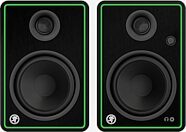
Mackie CR5-XBT Powered Bluetooth Studio Monitors
$199.99
- No Credit Check6 x$33.33
- No Credit Check4 x$50.00
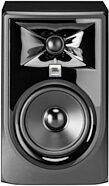
JBL 305P MKII 3 Series Powered Studio Monitor
$129.00
- No Credit Check6 x$21.50
- No Credit Check4 x$32.25
In the $500-per-pair range, you'll start to find monitors loaded with 5", 6," or 8" woofers from the home-studio standby brands. In this happy-medium price range, you'll also start to see more "boutiquey" offerings, including powered versions of classic unpowered monitors. Check out the Yamaha HS5 active studio monitors -- Yamaha's modern version of their iconic NS10 passive speakers, known for their flat frequency response. Then there's the Avantone MixCubes -- powered monitors inspired by the classic Auratone 5C Sound Cubes found in many pro studios. These small single-driver speakers are purposely designed to recreate the sound of "bass-challenged" systems like TVs or mini Bluetooth speakers -- they're an indispensable tool for checking mixes.

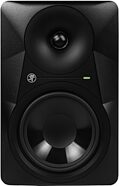
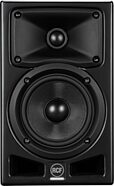


Kali Audio LP-6 V2 Powered Studio Monitor
$199.00
- No Credit Check6 x$33.17
- No Credit Check4 x$49.75
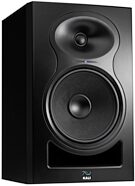
Kali Audio LP-8 V2 Powered Studio Monitor
$249.00
- No Credit Check6 x$41.50
- No Credit Check4 x$62.25
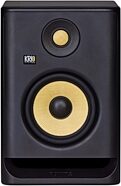
KRK RP5G4 Rokit 5 Generation 4 Powered Studio Monitor
$189.00
- No Credit Check6 x$31.50
- No Credit Check4 x$47.25
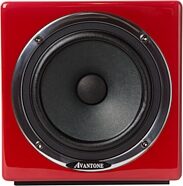
Avantone MixCubes Active Studio Monitor (60 Watts, 1x5.25")
$259.00
- No Credit Check6 x$43.17
- No Credit Check4 x$64.75
When you step up to the $500-$1000 price range, you'll find powered monitors with seriously professional features -- as well as modern versions of much older favorites, like the Avantone CLA-10A Chris Lord-Alge monitors.
In this price range, you'll also start to see 3-way monitors -- speakers with three drivers dedicated to lows, midrange and highs, for more detailed sound reproduction across the entire audible range.
In this price range, you'll also start to see 3-way monitors -- speakers with three drivers dedicated to lows, midrange and highs, for more detailed sound reproduction across the entire audible range.

Avantone Pro CLA-10A Chris Lord-Alge Active Studio Monitor System
$999.00
- 18 x
- 12 x$83.25
- 8 x$124.88
- No Credit Check6 x$166.50
- No Credit Check4 x$249.75
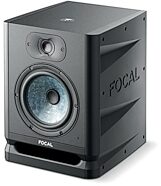
Focal Alpha 65 EVO Powered Studio Monitor
$399.00
- 8 x$49.88
- No Credit Check6 x$66.50
- No Credit Check4 x$99.75
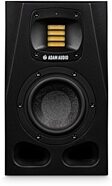
ADAM Audio A4V Active Studio Monitor
$499.99
- 8 x$62.50
- No Credit Check6 x$83.33
- No Credit Check4 x$125.00

PreSonus Sceptre S6 CoActual Active Studio Monitor
$399.00
- 8 x$49.88
- No Credit Check6 x$66.50
- No Credit Check4 x$99.75
You can upgrade your microphones, mic preamps, and audio interfaces -- but if you're using cheap studio monitor speakers, you'll be cheating yourself out of hearing the difference the rest of your gear can make. That's why it's worth it to invest in the best studio monitors you can afford.
For a larger control room, 7" or 8" woofers will serve you well. Check out the Adam Audio S2V, which pairs a 7" woofer and S-ART ribbon tweeter with DSP you can customize to your room.
For a larger control room, 7" or 8" woofers will serve you well. Check out the Adam Audio S2V, which pairs a 7" woofer and S-ART ribbon tweeter with DSP you can customize to your room.
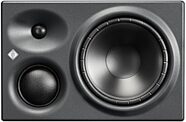
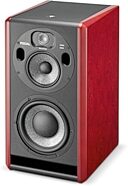
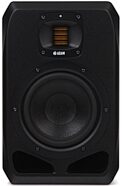

Active/powered vs. passive/unpowered -- which should I get?
All the monitor speakers featured in this guide are active/powered speakers, which means they have built-in power amplifiers, and that you can connect a line-level signal from your audio interface directly to the monitors. Passive speakers need to be fed a more powerful speaker-level signal -- a signal provided by a separate standalone power amplifier. If you happen to already have a 2-channel power amplifier, then a pair of passive studio monitor speakers can be an economical choice. Follow your speaker manufacturer's suggestions for how much power to feed your monitors. A good rule of thumb is to double amplifier power to a speaker's rating: for example, an amplifier that can put out 200 watts per channel is likely to be a good match for a pair of 100-watt speakers.4-inch, 5-inch, 6-inch, 8-inch -- does woofer size matter?
Generally speaking, larger woofers can reproduce lower frequencies more accurately than smaller ones. And larger studio monitors can typically play louder before distorting, with greater dynamic range, and a greater maximum listening distance. Of course, larger speakers also require more materials and more powerful amplifiers, which is why the 8" monitors are generally more expensive than 4", 5," or 6" versions. But if you've got the money to spend, and the room in your studio for the larger footprint that big monitor speakers require, 8" monitors are a solid choice.However, if you're mixing in a very small space, or you don't have any acoustic treatment up to mitigate bass buildup, smaller monitors may be the best fit for your room. In general, larger speakers are meant to be listened to from a greater distance. In the home studio, you want nearfield monitors, or possibly mid-field monitors if you're lucky enough to be working in a larger room. Beyond the scope of this buying guide, far-field monitors -- we're talking huge 12" and 15" woofers -- are what big studios use for playbacks when they're trying to impress the industry folk sitting in the back of the room.
What's that hole in my speaker? Is it better to have a front port, rear port, or no port?
Many monitor speakers have a hole or slot somewhere in the cabinet. This opening is called a port, and it's not just a hole -- it's carefully tuned to work with the air resonating inside the cabinet to increase the speaker's bass output beyond what the woofer speaker on its own can accomplish. A port can make your speakers louder. That said, there are two schools of thought on this. Some insist that sealed or enclosed speakers are more accurate. The one thing we can say for sure is that if your speakers have rear ports, it's especially important not to place them right next to a wall -- those ports need room to breathe.How do I place my studio monitors? What's the "Sweet Spot"?
For starters, you'll want to place your monitors as far as you can from the walls or corners. Placing acoustic treatment foam on the walls -- both behind the speakers, and behind the listener -- can help reduce room reflections and make your listening environment more accurate. Most importantly, you'll want to position your pair of stereo monitors in an equilateral triangle with your head. Your speakers should be the same distance from you as they are from each other, putting your head right in the so-called sweet spot. You'll also want the speakers' tweeters to be vertically lined up with your ears. A pair of studio monitor stands can help place your speakers at exactly the right height.Do I need a studio monitor subwoofer?
There's a reason live music venues use dedicated speakers only for low frequencies. Sure, your main studio monitors may be able to reproduce frequencies down to 20 Hz (or lower) but remember, reproducing low frequencies requires much more power than reproducing mids and highs. It's more efficient to dedicate a subwoofer to the sub-bass lows (100 Hz or lower), freeing up your main stereo monitors to reproduce the marrow of your mix.A studio subwoofer's extended frequency range will help you monitor accurately, taking over where your main stereo monitors leave off. Remember, unless you're using a high-pass filter on every microphone and instrument, you're always recording and mixing sub-bass frequencies -- whether you can hear them or not. A dedicated sub will help you hear exactly what you're capturing, so you're not flying blind when it comes time to mix. If you're monitoring without a sub, you may be unpleasantly surprised to hear muddy, boomy lows coming through the first time you hear your mix played back on a big PA system, or on a home 2.1 or 5.1 system with a dedicated subwoofer.
If you're planning on mixing sound for film, TV and games, the studio monitor subwoofer is essential, since you're mixing audio that will be played back on systems that have a sub. If your finished product will be delivered in 5.1 surround format, then the subwoofer is a must.
Consider adding one of these subwoofers to your monitoring setup:
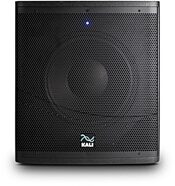
Kali Audio WS-12 Powered Subwoofer
$799.00
- 12 x$66.58
- 8 x$99.88
- No Credit Check6 x$133.17
- No Credit Check4 x$199.75
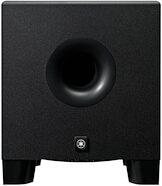
Yamaha HS8S Active Studio Subwoofer
$499.99
- 8 x$62.50
- No Credit Check6 x$83.33
- No Credit Check4 x$125.00
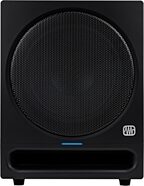
PreSonus Eris Pro Sub 10 Powered Studio Subwoofer
$449.99
- 8 x$56.25
- No Credit Check6 x$75.00
- No Credit Check4 x$112.50

JBL LSR310S Powered Studio Subwoofer Speaker
$349.00
- 8 x$43.63
- No Credit Check6 x$58.17
- No Credit Check4 x$87.25